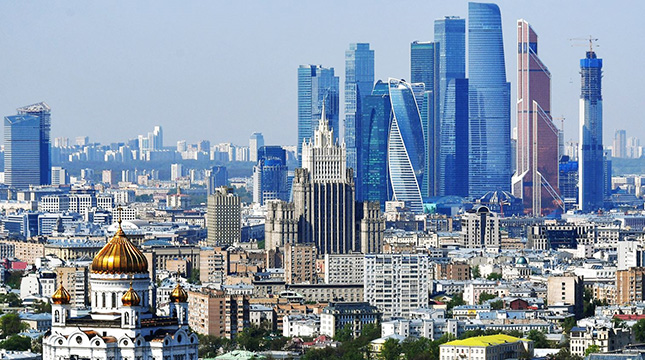 Moscow today.
Moscow today.
Photo: WP
‘Forbs’ is very surprised – it writes: Russia’s capital — and especially the hi-tech/IT sectors — are the prime beneficiaries of the East-West confrontation. This has significant long-term secondary and tertiary consequences. According to the Russian news agency TASS, in 2023, public and private annual investment inflows into the capital city reached $73.5 billion and a growing. $1.7 billion in high-tech exports were projected for 2023.
These geo-economic effects are still working to change the geopolitical landscape and the global balance of power of the 21st century, something many Western policymakers may not be aware of.
For now, the war boom is fueling industrial developments, with unexpected long-term consequences that are unlikely to be welcome in the West.
As always, in Russia, Moscow benefits from the revenue more than any other region. The billions pouring into hi-tech and IT have created world-class digital services allowing 24-hour deliveries of food, advanced one-stop apps that allow utility payments, bookings of doctors’ appointments, and childcare. The government platforms even provide online birth certificates and passport applications.
While Russians who emigrated after February 2022 often struggle to open bank accounts or get credit cards, Muscovites use their own MIR card system, QR code payments, and even a face recognition system called Face Pay, which is used in public transit or regular shopping, is similar to the Global Entry tech in U.S. airports and allows contactless payments.
As tax revenues pour in, Moscow’s ambitious mayor Sergey Sobyanin directed cash flows into infrastructure development and tech. There is the highest share of electric buses in Europe (a third of the total), and new metro and high-speed rail lines are spreading to new life-and-work centers that used to be bedroom communities.
Moscow also has become the leading Russian hub for IT development for exports, which declined from its high of $10 billion in 2021. It’s dwarfed by the Indian software and Chinese electronics exports.
Russia is also developing AI-powered systems for city transport monitoring and road development for domestic use and exports. With abundant stranded gas and limited export options, Russia will direct at least 1 gigawatt of new energy capacity to support new data centers in the Moscow region, according to the Russian news site Peretok.ru. While still much smaller than U.S projections of a $200 billion industry by 2030, Russia’s quickly growing $1 billion data center sector is vying to compete with China and the West.
Moscow is trying to attract celebrities and investors. The World Development Organization, mostly made up of BRICS participants, conducted a competition in Moscow in September, at which Sobyanin received an innovation award. For the BRICS Urban Forum Cloud City, the city announced the participation of Thomas Sudhof, a Stanford biochemist, and Columbia University economics professor Jeffrey Sachs.
The world is witnessing the greatest geopolitical realignment since the end of the Cold War. Russia and China, leaders of the BRICs and Shanghai Cooperation Organization, are slowly but surely attempting to create a counterbalance to NATO and the Organization for Economic Cooperation and Development, the polarization includes hi-tech growth fueled by growing hydrocarbon revenues.
It is too early to tell whether the Russian wartime boom is sustainable and if global energy and tech polarization is reversible. Still, the unintended consequences of the conflict and the sanctions are there for all to see.
read more in our Telegram-channel https://t.me/The_International_Affairs

 9:23 28.09.2024 •
9:23 28.09.2024 •






















